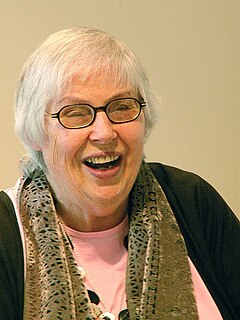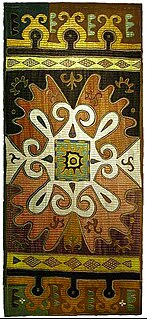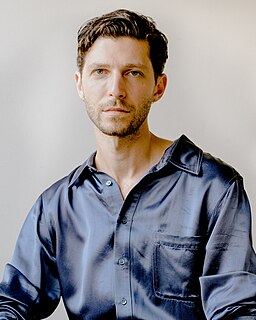Related Research Articles

Bethlehem is a Palestinian city in the central West Bank, about 10 km south of Jerusalem. Its population is approximately 25,000, and it is the capital of the Bethlehem Governorate of the State of Palestine. The economy is primarily tourist-driven, peaking during the Christmas season, when Christians make pilgrimage to the Church of the Nativity. The important holy site of Rachel's Tomb is at the northern entrance of Bethlehem, though not freely accessible to the city's own inhabitants and in general Palestinians living in the occupied West Bank due to the Israeli West Bank barrier.

Ramallah is a Palestinian city in the central West Bank that serves as the de facto administrative capital of the Palestinian National Authority (PNA). It is situated on the Judaean Mountains, 10 km north of Jerusalem, at an average elevation of 872 meters (2,861 ft) above sea level, adjacent to al-Bireh.

al-Qubayba, also known as Gbebah, Qubeiba or Qobebet Ibn 'Awwad, was a Palestinian village, located 24 kilometers northwest of Hebron. It was depopulated in the 1948 Arab–Israeli War.
Widad Kawar, was born in Tulkarm city in 1931, is an internationally renowned collector of Jordanian and Palestinian ethnic and cultural arts. She has amassed an extensive collection of dresses, costumes, textiles, and jewelry over the past 50 years, seeking to preserve a culture that has been largely dispersed by conflict. Kawar is known as Umm l'ibas al-falastini—the mother of Palestinian dress.
The Embroiderers' Guild of America, headquartered in Louisville, Kentucky, is an organization dedicated to "fostering the art of needlework and associated arts." Its members practice any and all forms of needlework, and are dedicated to education and community outreach. EGA has chapters throughout the United States. Chapters are organized into regions. Events are organized at all levels of the organization.

Bayt Dajan, also known as Dajūn, was a Palestinian Arab village situated approximately 6 kilometers (3.7 mi) southeast of Jaffa. It is thought to have been the site of the biblical town of Beth Dagon, mentioned in the Book of Joshua and in ancient Assyrian and Ancient Egyptian texts.
Serene Husseini Shahid was born in Jerusalem as a member of the influential Husayni family. Her father was Jamal al-Husayni, her maternal grandfather was Mayor of Jerusalem Faidi al-Alami, and her maternal uncle was Musa al-Alami. She was educated at the Ramallah Friends School in Ramallah, later at the American University of Beirut.

Kafr 'Ana' was a Palestinian town located 11 kilometers (6.8 mi) east of Jaffa, built on the ancient site of Ono. In 1945, the town had an estimated population of 2,800 Arabs and 220 Jews. Captured by the pre-state Jewish forces of the Alexandroni Brigade prior to the outbreak of the 1948 Arab–Israeli War, it was depopulated. Today, the old village site lies within the confines of the modern Israeli city of Or Yehuda.

The Arab Orthodox Society is an Eastern Orthodox charitable organization located near the New Gate in the Christian Quarter of the Old City of Jerusalem. A part of the Greek Orthodox Church of Jerusalem, it provides its local community with medical care, employment, a cultural center, a museum, an embroidery shop, a bakery, and a coffee shop.

Palestinian art is a term used to refer to paintings, posters, installation art and other visual media produced by Palestinian artists.

Ukrainian embroidery occupies an important place among the various branches of Ukrainian decorative arts. Embroidery has a rich history in Ukraine, and has long appeared in Ukrainian folk dress as well as played a part in traditional Ukrainian weddings and other celebrations. Appearing all across the country, Ukrainian embroidery varies depending on the region of origin. From Poltava, Kyiv, and Chernihiv in the east, to Volyn and Polissia in the northwest, to Bukovyna, and the Hutsul area in the southwest, the designs have a long history which defines its ornamental motifs and compositions, as well as its favorite choice of colors and types of stitches.

Palestinian costumes are the traditional clothing worn by Palestinians. Foreign travelers to Palestine in the 19th and early 20th centuries often commented on the rich variety of the costumes worn, particularly by the fellaheen or village women. Many of the handcrafted garments were richly embroidered and the creation and maintenance of these items played a significant role in the lives of the region's women.

Palestinian handicrafts are handicrafts produced by Palestinian people. A wide variety of handicrafts, many of which have been produced by Arabs in Palestine for hundreds of years, continue to be produced today. Palestinian handicrafts include embroidery work, pottery-making, soap-making, glass-making, weaving, and olive-wood and Mother of Pearl carvings, among others. Some Palestinian cities in the West Bank, particularly Bethlehem, Hebron and Nablus have gained renown for specializing in the production of a particular handicraft, with the sale and export of such items forming a key part of each cities' economy.

Valerie Campbell-Harding was an experimental textile art designer and author of 24 books.

Kaitag textiles are an unusual embroidered textile art form from the Kaytagsky District of southeast Dagestan, Russia, inhabited mainly by Dargins and Kumyks. Kaitag textiles are of simple construction, being laid and couched silk-floss embroidery on a cotton ground. The designs are often in the style of classical Safavid Persian art, sometimes illustrating horsemen and hunting scenes. Abstract Kaitag designs have been compared to those of Matisse and Paul Klee, though it is unlikely that either artist ever saw a Kaitag textile. Surviving examples are mostly from the 17th and 18th centuries. These embroideries were apparently made for local use in weddings, funerals, and for cradle trappings.
Association Najdeh (AN) is an NGO involved with development and educational projects in Palestinian refugee camps in Lebanon. It operates more exactly in and around the refugee camps. It defends the Palestinian refugee women who are often victims of discriminations and also participates in different campaigns, in coalitions of local and international organizations, for the right to work in Lebanon and the right of return to Palestine.

The International Exhibition of Industry, Science and Art was a World's fair held in Edinburgh, Scotland in 1886.
Rehab Nazzal is a Palestinian-born multidisciplinary artist based in Toronto, Ontario, Canada.
A textile museum is a museum with exhibits relating to the history and art of textiles, including:

Jordan Nassar is an American artist based in New York City. He primarily works with textiles, especially in creating works based on traditional Palestinian embroidery. Nassar also creates self-published artist's books and zines.